Opposite the village of Bonnieux, Lacoste is set on one of the Luberon’s most impressive sites. Perched on the northern slopes of the Petit Luberon Mountain, this charming village of 420 residents offers spectacular views over the Calavon Valley and the Mountains of Vaucluse. The walls of the towering ruined castle standing above Lacoste appear to protect the authentic Provençal village.
Watch this short video on the Luberon!
Plan your trip
- 🛏 Find the best accommodations in the Luberon on Booking.com
- 🚙 Rent a car in Avignon or Marseille-Provence Airport
- 🙋♀️ Get the PASS CÔTE D'AZUR and take your pick from more than 100 amazing experiences!
- 🤩 Visit the beautiful Provençal region of Luberon
- 🚐 Join a 6-hour tour of Lourmarin, Bonnieux, Roussillon, and Gordes by air-conditioned minibus
- 🚘 Discover Provence in a 2CV. Stroll along exceptional roads and enjoy a piece of Luberon all to yourself!
- 🥗 Experience a black truffle hunting tour in a Luberon plantation
- 📚 Read the DK Eyewitness Provence and the Côte d’Azur Travel Guide
- 🗺 Download the touristic map of Lacoste
- 🚻 Public toilets are located at the entrance to the old village, in Place de l'église near the church.
- 🚗 Free parking at the entrance to the old medieval centre: Parking Paysager (Route d'Apt, coming from Apt or Goult).

The village of Lacoste © French Moments
A brief history of Lacoste
The first mention of Lacoste appears in 1038 under the name "castrum de Costae" (the castle of the hillside in Latin).
The middle-ages
During the Middle Ages, Lacoste was unique in that it was an enclave of the County of Provence within the Comtat Venaissin, a territory of the Pope. The village shared the fate of Provence in 1481 when the county became part of the kingdom of France. The neighbouring villages (Bonnieux, Ménerbes, etc) remained part of the Comtat Venaissin until the French Revolution.

A medieval street in the village © French Moments
Like neighbouring Ménerbes, Lacoste embraced Protestanism in the 16th century. This was seen as an affront to the authority of the Pope because the village bordered the Papal States of Comtat Venaissin.
The Waldensian immigration
Like the whole of the Luberon region, Lacoste suffered the calamities of the 14th century: plagues, wars and banditry.
By 1533 the village had lost many of its inhabitants. This led Balthazar, the lord of Lacoste, to sign an Act of Habitation (“acte d’habitation”) to encourage the coming of Waldensian families to the village. The Waldensians (Vaudois) were a Christian movement originating in the Swiss Alps persecuted from the 12th century onward.

The protestant temple of Lacoste. Photo: Véronique PAGNIER (Public Domain via Wikimedia Commons)
The Lacoste massacre
When the Waldensians adopted the ideas of the Reformation in 1532, further persecution was directed against them by the Parliament of Aix.
In 1545 the troops of Paulin de La Garde pillaged Lacoste under the order of the President of Aix Parliament, Maynier, also lord of Oppède. Their lands were confiscated, the men slaughtered, and the women raped before being killed.

Jean Maynier (1495-1558), baron of Oppède and president of the Aix Parliament
The Marquis de Sade
In 1716, Lacoste came under the rule of François Gaspard de Sade, the grandfather of Donatien Alphonse François de Sade, aka the Marquis de Sade (1749-1814), notorious for his scandalous behaviour and writings. The Marquis lived in the castle from time to time for 30 years.
The sulphurous Marquis de Sade stayed at the castle of Lacoste from 1769 to 1772, between two scandals: that of Arcueil and that of Marseille. He took refuge there again until his imprisonment in the keep of Vincennes in 1777. He escaped during his transfer to Aix, and went there one last time from 16 July to 7 September 1778, before being returned to Vincennes.
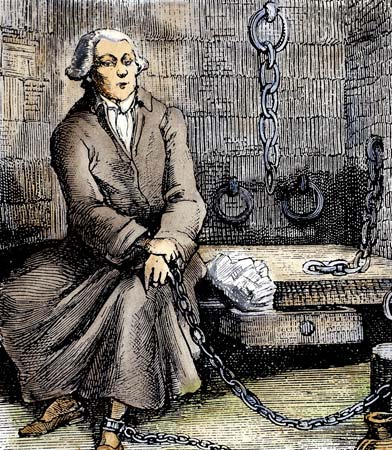
Marquis de Sade in prison
What to see in Lacoste
The village is exposed to the sun and protected from the mistral by the Petit Luberon mountain.
Lacoste owes its reputation in part to the exceptional quality of the soft, clear limestone extracted from its quarries. Together with agriculture, this generated an economic activity that was conducive to the development of the village.
The centre of the village contains fine stone houses built on terraces along steep old cobblestone lanes surrounding the castle.
From the car park “Parking Paysager", access the village via the Chemin de Saint Véran or the Route d'Apt and the Traverse des Cèdres.
The visit of Lacoste starts on the church square: Place de l’Église.
The Saint Trophime church
The Saint Trophime church dates back to the 12th and 13th centuries and stands outside the medieval village walls.

Saint-Trophime church © French Moments
The church has been altered several times. Parts of the Romanesque period are still visible in the chevet. The southern façade was rebuilt in the 17th century to replace a Romanesque portal.
The inside of this Romanesque sanctuary features beautiful frescos.

Inside the Saint-Trophime church © French Moments
The sanctuary is the burial place of the former lords of Lacoste, the powerful Simiane family.
The Portail de la Garde
From there, start the ascent to the castle by passing under the Guard’s Gate (Portail de la Garde).

Portail de la Garde © French Moments
The main entrance to the medieval village is defended by a square tower and surmounted by a decorative bretèche.
This medieval-looking gate was rebuilt at the same time as the village’s ramparts in the 16th century. To the right, a damaged medieval gate which has undergone restoration features the first written decrees of the village engraved in its stone.

Portail de la Garde (village side) © French Moments
Rue Caladée
Past the gate, the cobbled Rue Sainte Trophime (also named Rue Caladée) leads to the campanile or belfry. Fine houses from the 16th century line the street with medieval-inspired façades.

Rue Saint Trophime © French Moments

The old bakery (boulangerie) © French Moments
The belfry
Continue to the belfry (1550), along the 16th century facades, still of medieval inspiration, and the gardens created on the site of destroyed houses.

The belfry of Lacoste © French Moments
The belfry, which was recently enhanced by a campanile, marks the entrance to the seigniorial space, the castral core (noyau castral).

A view of the belfry of Lacoste during the ascent to the castle © French Moments
Protected by its own enclosure, the area is vast and contains terraces and pits around the castle, some of which were cleared in the 20th century.
At the belfry, the way up to the castle continues to the right, with beautiful views over the curved-tile roofs of the village.
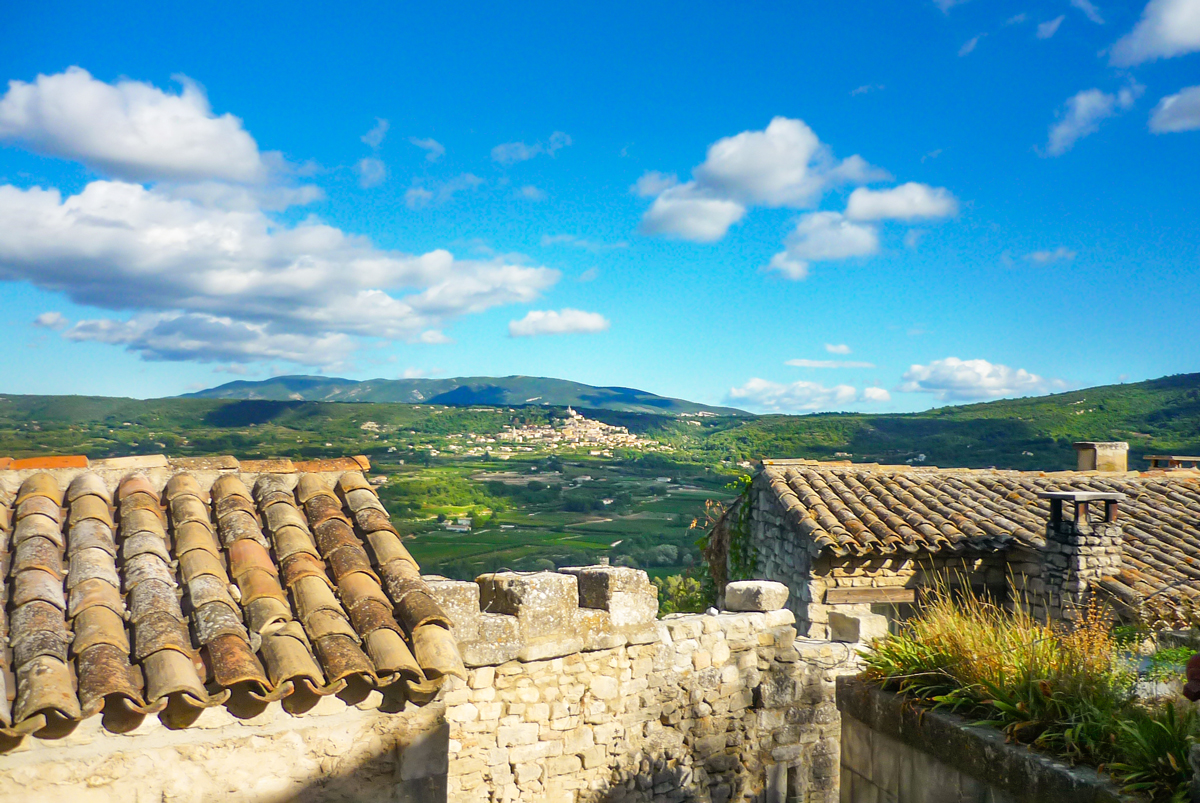
The curved-tile roofs of the village © French Moments
The sloping lane that passes under the belfry leads to the orientation table and then to the castle.
The castle of Lacoste
At the top of the village, the ruined castle is a fascinating historical monument. You can have a close look at the exterior: moats, gates, corner towers, curtain walls, etc.

The castle of Lacoste © French Moments
The logis dates back to the 16th and 18th centuries, and the walls to the 12th century. However, the castle is mentioned in historical records as early as the 11th century.
At the foot of the eastern façade of the castle, the surviving parts to the north are the oldest and correspond to the medieval late Romanesque phase.

A low-angle view of the castle of Lacoste © French Moments
The successive owners
For many years, the castle belonged to the Simiane family before being inherited by the Sades. During the French Revolution, the castle was damaged, and some of its stonework was removed and sold off. In 1796, the castle's estate was sold to Rovère, a Member of Parliament and a native of Bonnieux. Rovère was then deported to French Guyana, where he died in 1798.
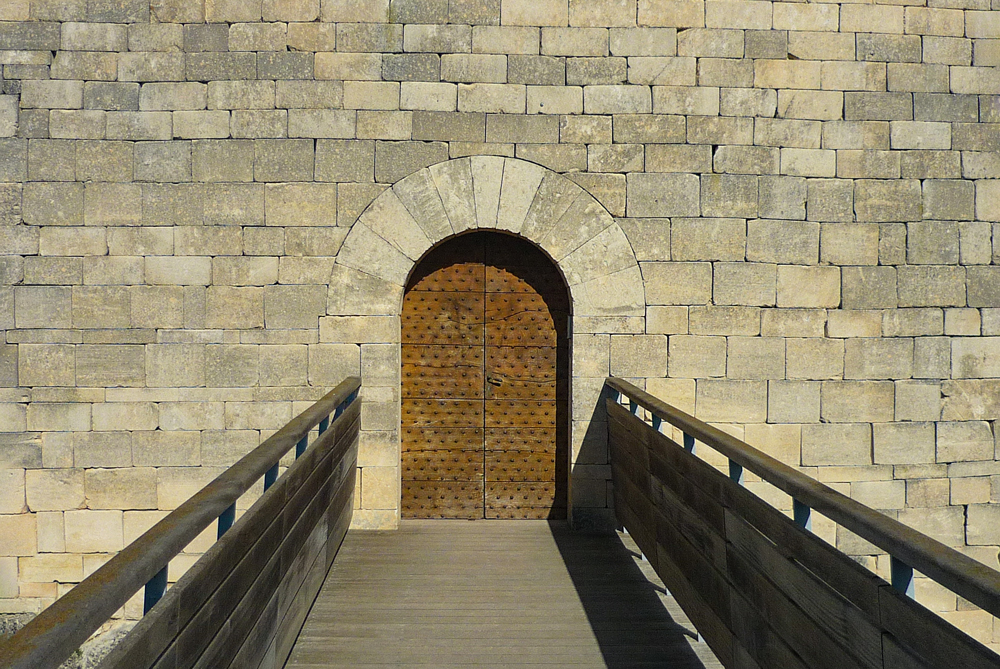
The gate to the castle © French Moments
In 1952, the castle came into the possession of André Bouer, a college teacher who restored the castle. Then, in 2001, fashion designer Pierre Cardin (1922-2020) acquired the castle and continued the restoration work.

The castle of Lacoste and the sculpture representing the Marquis de Sade © French Moments
The view from the castle
The view from the castle over the Calavon Valley, Bonnieux, Roussillon, the Mountains of Vaucluse and Mount Ventoux is breathtaking.

A panoramique view from the castle towards Bonnieux and the mountain of Grand Luberon © French Moments
Going back down to the village
On the way down to the village, the Goats’ Gate (Portail des Chèvres) used to serve as the upper doorway of Lacoste.
Along Rue du Four, several 16th-century houses can be admired. The narrow cobbled street leading to the Town Hall (Mairie) features a fine old sundial built into the wall above the doorway.

The charming little town-hall of Lacoste © French Moments
From the Place de la Mairie, the Rue Basse leads back to the Place de l’Église.
Before leaving the village, look for the two old wash-houses restored: on route de Bonnieux and Route de Goult.
Watch my guided walk of Lacoste
A 21-minute video that starts at the entrance of Lacoste and climbs to the castle and the belvedere at the top of the village.
Find out more about Lacoste
Holiday accommodation in Lacoste
Lacoste and surroundings have a high capacity for holiday accommodation. The commune has hotels, bed and breakfasts (covering all price ranges), estate agencies offering seasonal rentals and gîtes.
Click here to book your accommodation in the Luberon or browse the map below:
On the blog and other websites
Here are some pages from our blog and other websites to find out more about this Provencal destination.
- Discover the hilltop villages of the Luberon
- Find out more about Provence-Alpes-Côte d'Azur
- The official tourist office of the area
What to do in the Luberon
Be inspired by a list of things to do in the Luberon:
Pin Lacoste on Pinterest

More photos of Lacoste

A low-angle view of the belfry © French Moments
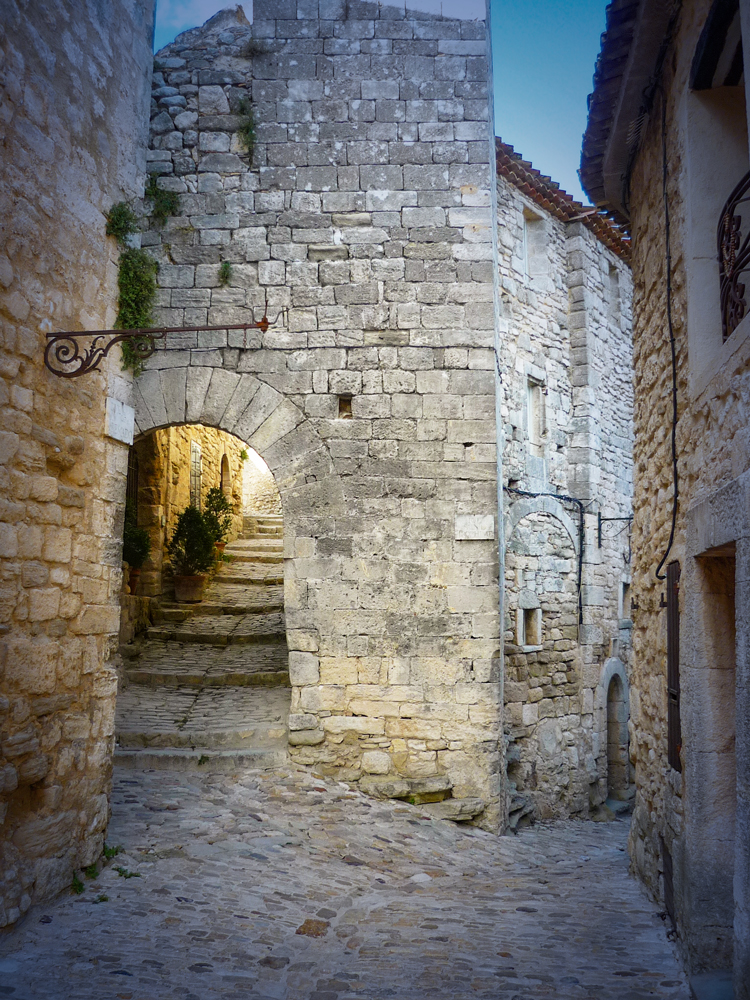
Rue Saint Trophime © French Moments

Rue Saint Trophime © French Moments

A fontaine in Rue Saint Trophime © French Moments

The narrow street that connects the belfry to the castle © French Moments
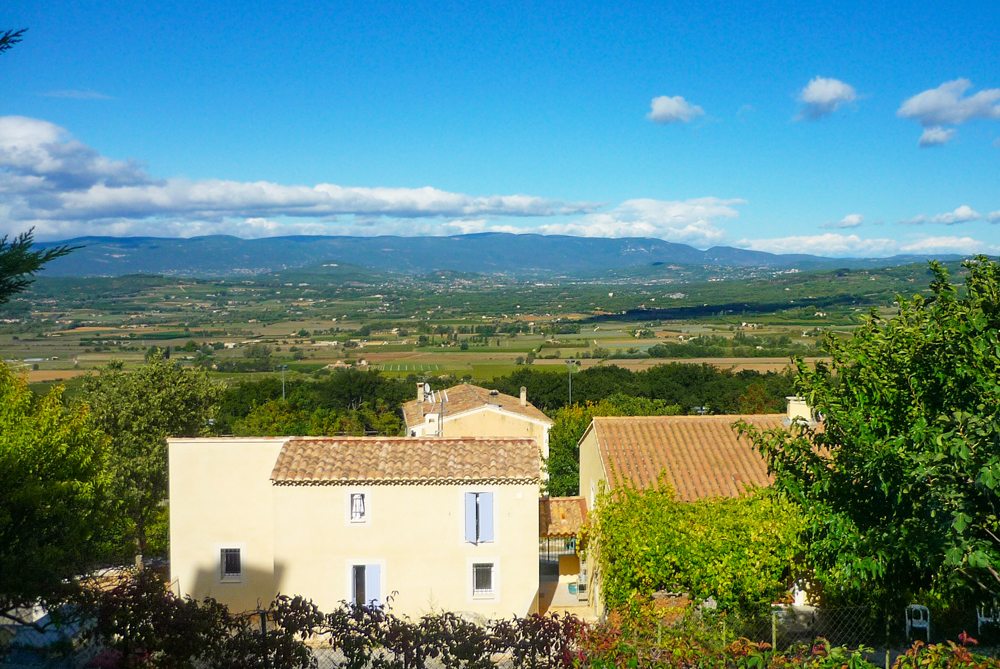
A view of the village © French Moments

The castle of Lacoste © French Moments

The view from the castle © French Moments

Can you spot the village of Bonnieux in the distance? © French Moments

The village of Lacoste in Provence © French Moments

The castle and the village © French Moments

A view from the valley © French Moments

Walking in the countryside of Lacoste © French Moments






